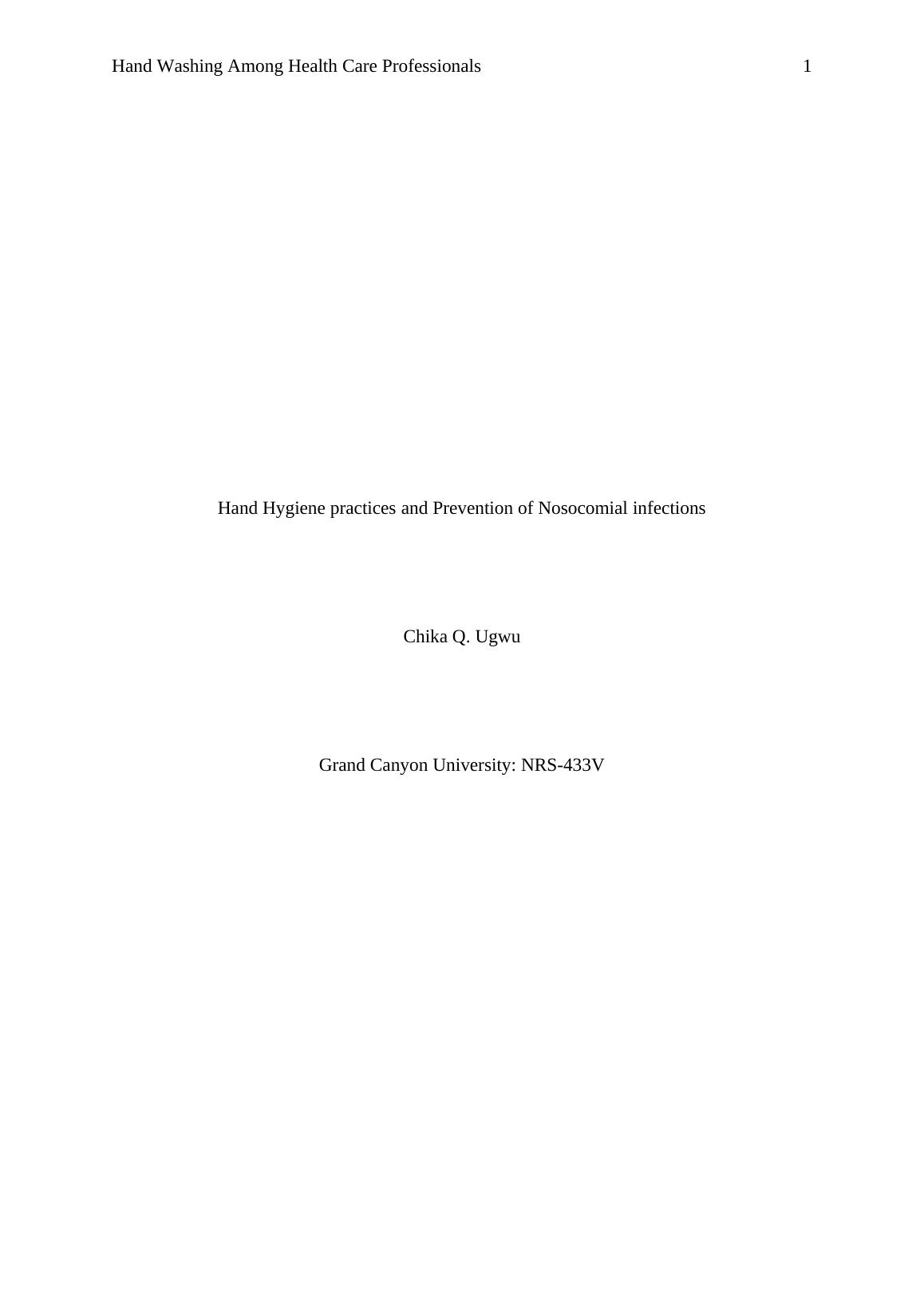Hand Washing Among Health Care Professionals Case Study 2022
Added on 2022-09-17
4 Pages1075 Words33 Views
End of preview
Want to access all the pages? Upload your documents or become a member.
Effect of Handwashing Techniques on Hospital-Acquired Infections
|5
|1074
|1
Hand Hygiene practices and Prevention
|12
|769
|13
Hand Washing Among Healthcare Professionals Assignment 2022
|8
|1811
|34
Facilitation Plan Barriers Assignment Report
|1
|1368
|9
Is the use of alcohol based solution in hand washing more effective than soap and water hand washing in reducing nosocomial infection infections inside a nephrology unit of a hospital?
|1
|1182
|106
Comparison of Research Questions, Sample Population, and Study Limitations in Hand Washing Practice for Nosocomial Infection Prevention
|6
|1183
|1


